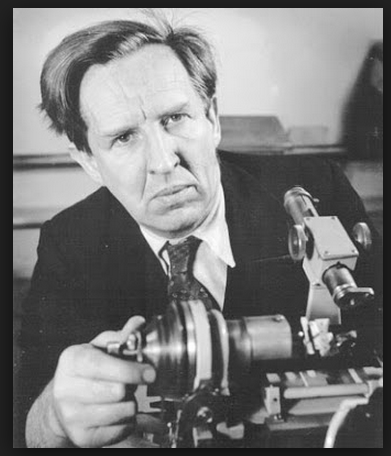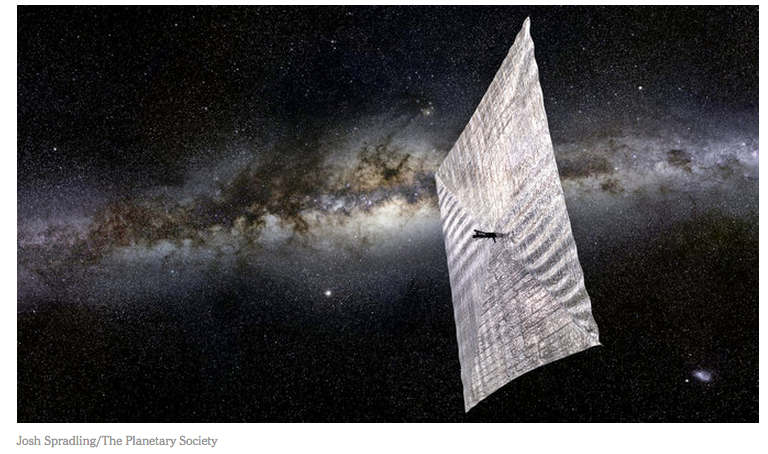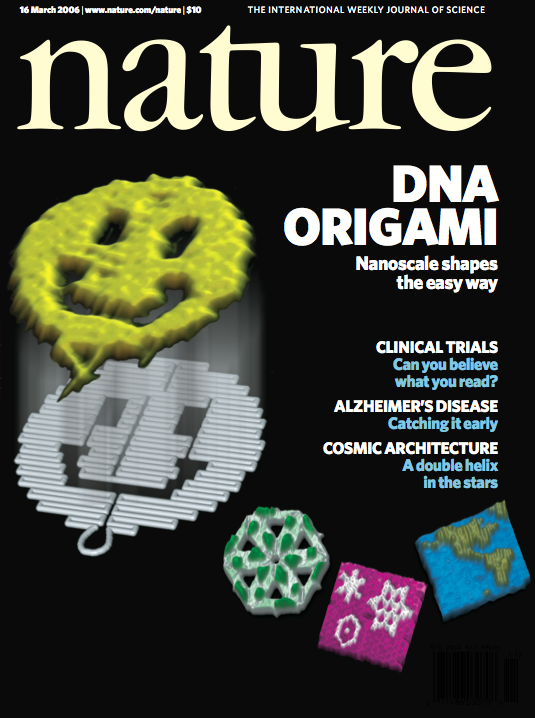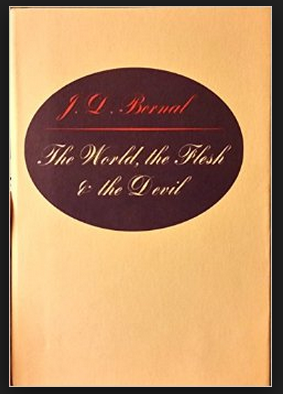Worldly Devils
“NO MORE SEX!” London’s Daily Herald brought this unexpected news to readers in February 1929. Those intrigued or alarmed enough to continue reading found yet more startling news – “MEN WITH EARS UNDER LUNGS” and “WHAT HUMANS MAY BE LIKE ANOTHER DAY.” All of this was revealed by John Desmond Bernal, a young Irish scientist who had taken a “PEEP INTO THE FUTURE” with his new daring book, The World, The Flesh, and the Devil.I composed the above paragraph back in 2008 when I started to write The Visioneers. I was living in Cassis, a lovely seaside town near Marseille as a fellow at the Camargo Foundation. In the end, I discarded this opening gambit for something else. But after a student visited me yesterday to talk about The Future, I thought about Bernal's visions again... Familiar to the denizens of Cambridge and Bloomsbury for his piercing eyes and rolling gait, J.D. Bernal was an Irish crystallographer and molecular biologist who counted H.G Wells, Julian and Aldous Huxley, and C.P. Snow among his colleagues. At least three of his protégées won Nobel prizes. A committed Marxist, Bernal believed in the power of rational thought and radical new technologies to help society confront - as the subtitle of his book says - the “three enemies of the rational soul.” (The full text of Bernal's slight classic is here.)The first and foremost foe was the World. To transcend the limits of terrestrial resources and the sheer unpredictability of the planet’s environment, he proposed that people leave the planet with its “massive, unintelligent forces of nature, heat and cold, winds, rivers, matter and energy” and expand into the cosmos. After building “space sailing” vessels - yes, Bernal predicted solar sailing - these people would go forth to explore the solar system.
Familiar to the denizens of Cambridge and Bloomsbury for his piercing eyes and rolling gait, J.D. Bernal was an Irish crystallographer and molecular biologist who counted H.G Wells, Julian and Aldous Huxley, and C.P. Snow among his colleagues. At least three of his protégées won Nobel prizes. A committed Marxist, Bernal believed in the power of rational thought and radical new technologies to help society confront - as the subtitle of his book says - the “three enemies of the rational soul.” (The full text of Bernal's slight classic is here.)The first and foremost foe was the World. To transcend the limits of terrestrial resources and the sheer unpredictability of the planet’s environment, he proposed that people leave the planet with its “massive, unintelligent forces of nature, heat and cold, winds, rivers, matter and energy” and expand into the cosmos. After building “space sailing” vessels - yes, Bernal predicted solar sailing - these people would go forth to explore the solar system.  There, they would establish permanent free-floating spherical settlements where “free communication and voluntary associations of interested persons” would prevail, freeing people from the traditions of earthly politics and societal mores. (Bernal himself championed “open marriage.)Building these new space structures and vehicles would require novel materials fashioned with a precise and deliberate “molecular architecture.” Light, strong, and manufactured via solar power, future engineers would restructure the physical world with their “new molecular materials” and take humanity out into space and to its destiny.It's hard not to read Bernal's predictions and think of Richard Feynman's own prognostications, made in a 1959 speech, about how scientists would eventually acquire the power to manipulate the material world at the molecular level.
There, they would establish permanent free-floating spherical settlements where “free communication and voluntary associations of interested persons” would prevail, freeing people from the traditions of earthly politics and societal mores. (Bernal himself championed “open marriage.)Building these new space structures and vehicles would require novel materials fashioned with a precise and deliberate “molecular architecture.” Light, strong, and manufactured via solar power, future engineers would restructure the physical world with their “new molecular materials” and take humanity out into space and to its destiny.It's hard not to read Bernal's predictions and think of Richard Feynman's own prognostications, made in a 1959 speech, about how scientists would eventually acquire the power to manipulate the material world at the molecular level. Such predictions acquired greater currency in the 1980s as futurist Eric Drexler popularized nanotechnology (and brought Feynman's predictions back into the limelight).Back to Bernal...To thrive in their new environments, people would “interfere in a highly unnatural manner” with their own “germ plasm” – the Flesh. For Bernal, this meant radical surgery, the replacement of organs and tissues by mechanical substitutes, and the eventual modification of humanity’s genetic code. Eventually, these new cybernetic creatures would seek a form of immortality by preserving their ideas and memories with the electronics and machines they were now conjoined with. Four decades after Bernal's book appeared, molecular biologists took the first steps toward genetic engineering. Today, scientists treat DNA not just as an information containing molecule - code - but also as something to build with.
Such predictions acquired greater currency in the 1980s as futurist Eric Drexler popularized nanotechnology (and brought Feynman's predictions back into the limelight).Back to Bernal...To thrive in their new environments, people would “interfere in a highly unnatural manner” with their own “germ plasm” – the Flesh. For Bernal, this meant radical surgery, the replacement of organs and tissues by mechanical substitutes, and the eventual modification of humanity’s genetic code. Eventually, these new cybernetic creatures would seek a form of immortality by preserving their ideas and memories with the electronics and machines they were now conjoined with. Four decades after Bernal's book appeared, molecular biologists took the first steps toward genetic engineering. Today, scientists treat DNA not just as an information containing molecule - code - but also as something to build with. However, the Devil – our “desires and fears…imaginations and stupidities” – remained a treacherous foe. Could people someday overcome their own psychology and create the world they wanted with their new technologies, Bernal asked? Between “the humanizers and the mechanizers,” Bernal optimistically sided with the latter.
However, the Devil – our “desires and fears…imaginations and stupidities” – remained a treacherous foe. Could people someday overcome their own psychology and create the world they wanted with their new technologies, Bernal asked? Between “the humanizers and the mechanizers,” Bernal optimistically sided with the latter. Bernal’s book was part of a British series called “Today and Tomorrow” that included offerings from J.B.S. Haldane and Bertrand Russell. All three British intellectuals speculated on the future of science and technology. When their books appeared, these rational forces appeared ascendant. Stories about genetics, quantum mechanics, understanding the human mind, and even the expansion of the universe itself filled newspapers and magazines. The hyperbolic headlines Bernal’s book generated typified media coverage of radical new technological ideas (as they still do today).Since the founding of the Republic, Americans had flung themselves into a technological torrent with enthusiasm bordering on faith. Technology enabled the rise of the United States as an economic, military, and cultural power and helped create Americans’ faith in the future, what H.G. Well’s once termed their “optimistic fatalism.” However, the technocratic elimination of entire populations, mushrooming radioactive clouds over Hiroshima and Nagasaki, and apocalyptic fears generated by the Cold War eroded this technological optimism.As the Vietnam War ground on and environmental concerns mounted, public enthusiasm in the United States for massive new technological undertakings reached a nadir. Doubt, ambivalence, and apprehension about the future took hold instead. Jump ahead to today - an anti-science Congress, anti-vaxxers, religious fundamentalists, and just plain, old-fashioned stubbornness and irrationality. While scientists and engineers have mastered the World and even dared to improve the Flesh, the Devil has refused to surrender the whip hand.
Bernal’s book was part of a British series called “Today and Tomorrow” that included offerings from J.B.S. Haldane and Bertrand Russell. All three British intellectuals speculated on the future of science and technology. When their books appeared, these rational forces appeared ascendant. Stories about genetics, quantum mechanics, understanding the human mind, and even the expansion of the universe itself filled newspapers and magazines. The hyperbolic headlines Bernal’s book generated typified media coverage of radical new technological ideas (as they still do today).Since the founding of the Republic, Americans had flung themselves into a technological torrent with enthusiasm bordering on faith. Technology enabled the rise of the United States as an economic, military, and cultural power and helped create Americans’ faith in the future, what H.G. Well’s once termed their “optimistic fatalism.” However, the technocratic elimination of entire populations, mushrooming radioactive clouds over Hiroshima and Nagasaki, and apocalyptic fears generated by the Cold War eroded this technological optimism.As the Vietnam War ground on and environmental concerns mounted, public enthusiasm in the United States for massive new technological undertakings reached a nadir. Doubt, ambivalence, and apprehension about the future took hold instead. Jump ahead to today - an anti-science Congress, anti-vaxxers, religious fundamentalists, and just plain, old-fashioned stubbornness and irrationality. While scientists and engineers have mastered the World and even dared to improve the Flesh, the Devil has refused to surrender the whip hand.